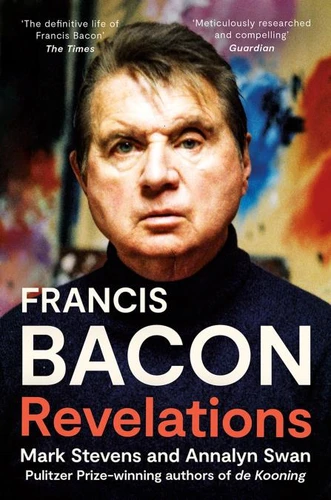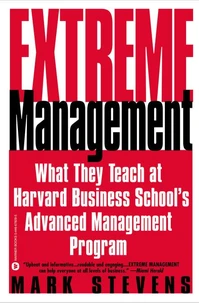Francis Bacon. Revelations
Par : ,Formats :
Disponible dans votre compte client Decitre ou Furet du Nord dès validation de votre commande. Le format ePub protégé est :
- Compatible avec une lecture sur My Vivlio (smartphone, tablette, ordinateur)
- Compatible avec une lecture sur liseuses Vivlio
- Pour les liseuses autres que Vivlio, vous devez utiliser le logiciel Adobe Digital Edition. Non compatible avec la lecture sur les liseuses Kindle, Remarkable et Sony
- Non compatible avec un achat hors France métropolitaine
 , qui est-ce ?
, qui est-ce ?Notre partenaire de plateforme de lecture numérique où vous retrouverez l'ensemble de vos ebooks gratuitement
Pour en savoir plus sur nos ebooks, consultez notre aide en ligne ici
- Nombre de pages880
- FormatePub
- ISBN978-0-00-746881-2
- EAN9780007468812
- Date de parution21/01/2021
- Protection num.Adobe DRM
- Infos supplémentairesepub
- ÉditeurWilliam Collins
Résumé
The Times Art Book of the Year 2021
FINALIST FOR THE PLUTARCH AWARD 2022
'Must surely be the definitive life of Francis Bacon . A biography that no Bacon fan - or indeed foe - can afford to overlook . Mesmerising' THE TIMES
'A magnificent triumph . I was captivated by every line' OBSERVER
A decade in the making, based upon hundreds of interviews and extensive new material, Pulitzer Prize winners Mark Stevens and Annalyn Swan have written a startlingly original portrait - rich, complex, and subtle - of a commanding modern figure.
Bacon concealed many important aspects of his life.
He described himself as an asthmatic child in Ireland with foxhunting parents and a tyrannical father, but he was also rescued by a series of formidable women - women who in this biography emerge in their own right. He was never just a dissolute young man but was also a passionate reader, largely self-taught. Early on, influenced by Eileen Gray, he became a hard-working and ambitious designer, a brief career explored here in detail for the first time.
He dreamed of remaking the modern room. Bacon worked no less hard or ambitiously as a painter, at first with little success. Throughout the 1930s and early '40s he suffered ongoing failures, growing isolated and often ill. His health issues throughout his life were far more significant than he revealed. Then came his astonishing breakthrough in 1944, with Three Studies for Figures at the Base of a Crucifixion.
In the following decades, he emerged as one of the great iconoclasts and bon vivants of his time, a Wildean figure whom one friend called 'a terrific grandee.' Bacon was typically celebrated as a sexual adventurer who liked rough trade, but he never stopped longing for a serious committed relationship, however painful. He continued to make disturbing images of the strangeness within, but developed into a more varied artist than has been recognised, creating in particular an extraordinary series of self-portraits.
He was an artist who believed in chance and paradox: the iconoclast eventually became an icon. This is a story, deeply researched and masterfully told, of a sickly boy who became one of the great figures of his time. The twentieth century does not know itself without Bacon.
He described himself as an asthmatic child in Ireland with foxhunting parents and a tyrannical father, but he was also rescued by a series of formidable women - women who in this biography emerge in their own right. He was never just a dissolute young man but was also a passionate reader, largely self-taught. Early on, influenced by Eileen Gray, he became a hard-working and ambitious designer, a brief career explored here in detail for the first time.
He dreamed of remaking the modern room. Bacon worked no less hard or ambitiously as a painter, at first with little success. Throughout the 1930s and early '40s he suffered ongoing failures, growing isolated and often ill. His health issues throughout his life were far more significant than he revealed. Then came his astonishing breakthrough in 1944, with Three Studies for Figures at the Base of a Crucifixion.
In the following decades, he emerged as one of the great iconoclasts and bon vivants of his time, a Wildean figure whom one friend called 'a terrific grandee.' Bacon was typically celebrated as a sexual adventurer who liked rough trade, but he never stopped longing for a serious committed relationship, however painful. He continued to make disturbing images of the strangeness within, but developed into a more varied artist than has been recognised, creating in particular an extraordinary series of self-portraits.
He was an artist who believed in chance and paradox: the iconoclast eventually became an icon. This is a story, deeply researched and masterfully told, of a sickly boy who became one of the great figures of his time. The twentieth century does not know itself without Bacon.
The Times Art Book of the Year 2021
FINALIST FOR THE PLUTARCH AWARD 2022
'Must surely be the definitive life of Francis Bacon . A biography that no Bacon fan - or indeed foe - can afford to overlook . Mesmerising' THE TIMES
'A magnificent triumph . I was captivated by every line' OBSERVER
A decade in the making, based upon hundreds of interviews and extensive new material, Pulitzer Prize winners Mark Stevens and Annalyn Swan have written a startlingly original portrait - rich, complex, and subtle - of a commanding modern figure.
Bacon concealed many important aspects of his life.
He described himself as an asthmatic child in Ireland with foxhunting parents and a tyrannical father, but he was also rescued by a series of formidable women - women who in this biography emerge in their own right. He was never just a dissolute young man but was also a passionate reader, largely self-taught. Early on, influenced by Eileen Gray, he became a hard-working and ambitious designer, a brief career explored here in detail for the first time.
He dreamed of remaking the modern room. Bacon worked no less hard or ambitiously as a painter, at first with little success. Throughout the 1930s and early '40s he suffered ongoing failures, growing isolated and often ill. His health issues throughout his life were far more significant than he revealed. Then came his astonishing breakthrough in 1944, with Three Studies for Figures at the Base of a Crucifixion.
In the following decades, he emerged as one of the great iconoclasts and bon vivants of his time, a Wildean figure whom one friend called 'a terrific grandee.' Bacon was typically celebrated as a sexual adventurer who liked rough trade, but he never stopped longing for a serious committed relationship, however painful. He continued to make disturbing images of the strangeness within, but developed into a more varied artist than has been recognised, creating in particular an extraordinary series of self-portraits.
He was an artist who believed in chance and paradox: the iconoclast eventually became an icon. This is a story, deeply researched and masterfully told, of a sickly boy who became one of the great figures of his time. The twentieth century does not know itself without Bacon.
He described himself as an asthmatic child in Ireland with foxhunting parents and a tyrannical father, but he was also rescued by a series of formidable women - women who in this biography emerge in their own right. He was never just a dissolute young man but was also a passionate reader, largely self-taught. Early on, influenced by Eileen Gray, he became a hard-working and ambitious designer, a brief career explored here in detail for the first time.
He dreamed of remaking the modern room. Bacon worked no less hard or ambitiously as a painter, at first with little success. Throughout the 1930s and early '40s he suffered ongoing failures, growing isolated and often ill. His health issues throughout his life were far more significant than he revealed. Then came his astonishing breakthrough in 1944, with Three Studies for Figures at the Base of a Crucifixion.
In the following decades, he emerged as one of the great iconoclasts and bon vivants of his time, a Wildean figure whom one friend called 'a terrific grandee.' Bacon was typically celebrated as a sexual adventurer who liked rough trade, but he never stopped longing for a serious committed relationship, however painful. He continued to make disturbing images of the strangeness within, but developed into a more varied artist than has been recognised, creating in particular an extraordinary series of self-portraits.
He was an artist who believed in chance and paradox: the iconoclast eventually became an icon. This is a story, deeply researched and masterfully told, of a sickly boy who became one of the great figures of his time. The twentieth century does not know itself without Bacon.






